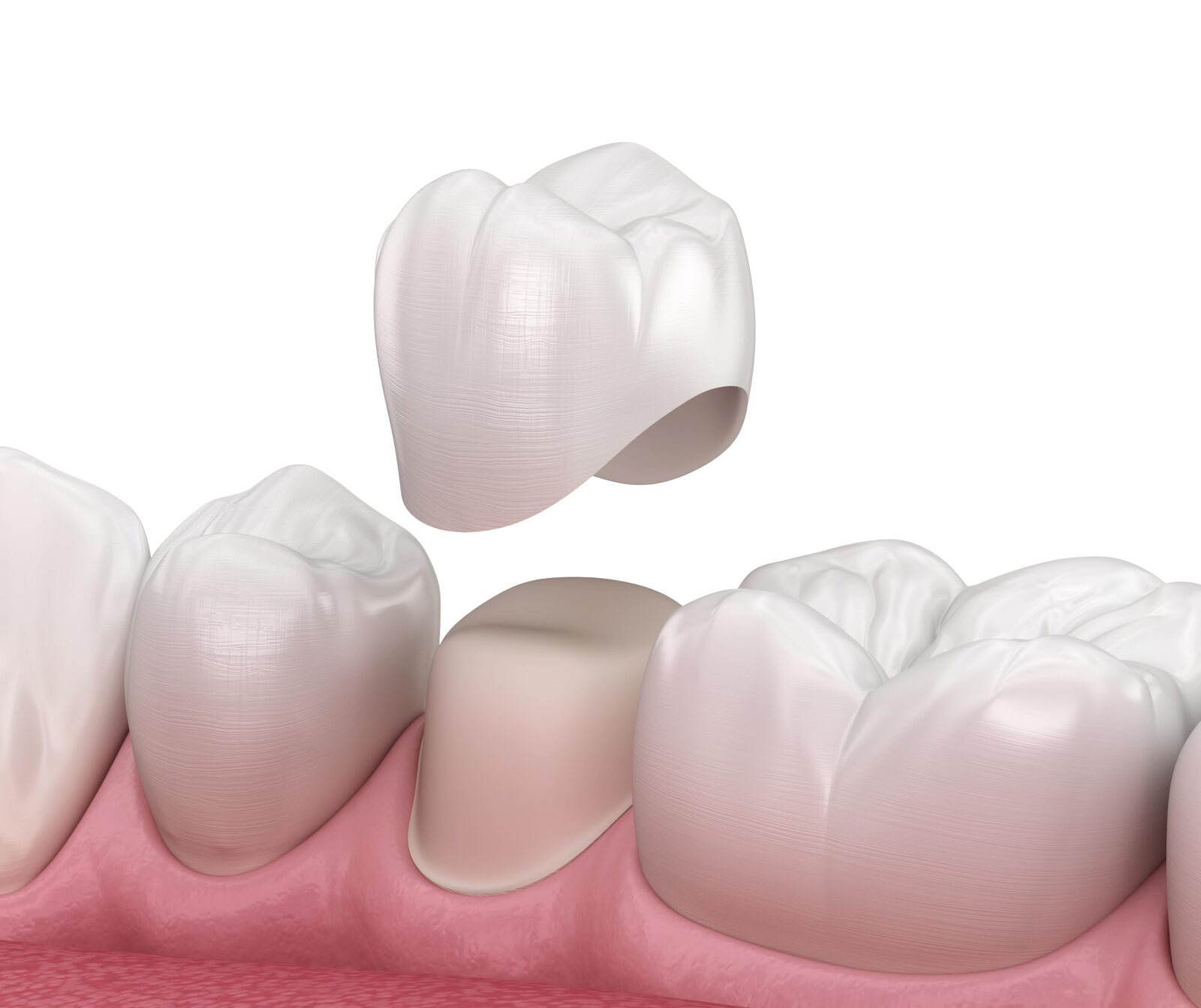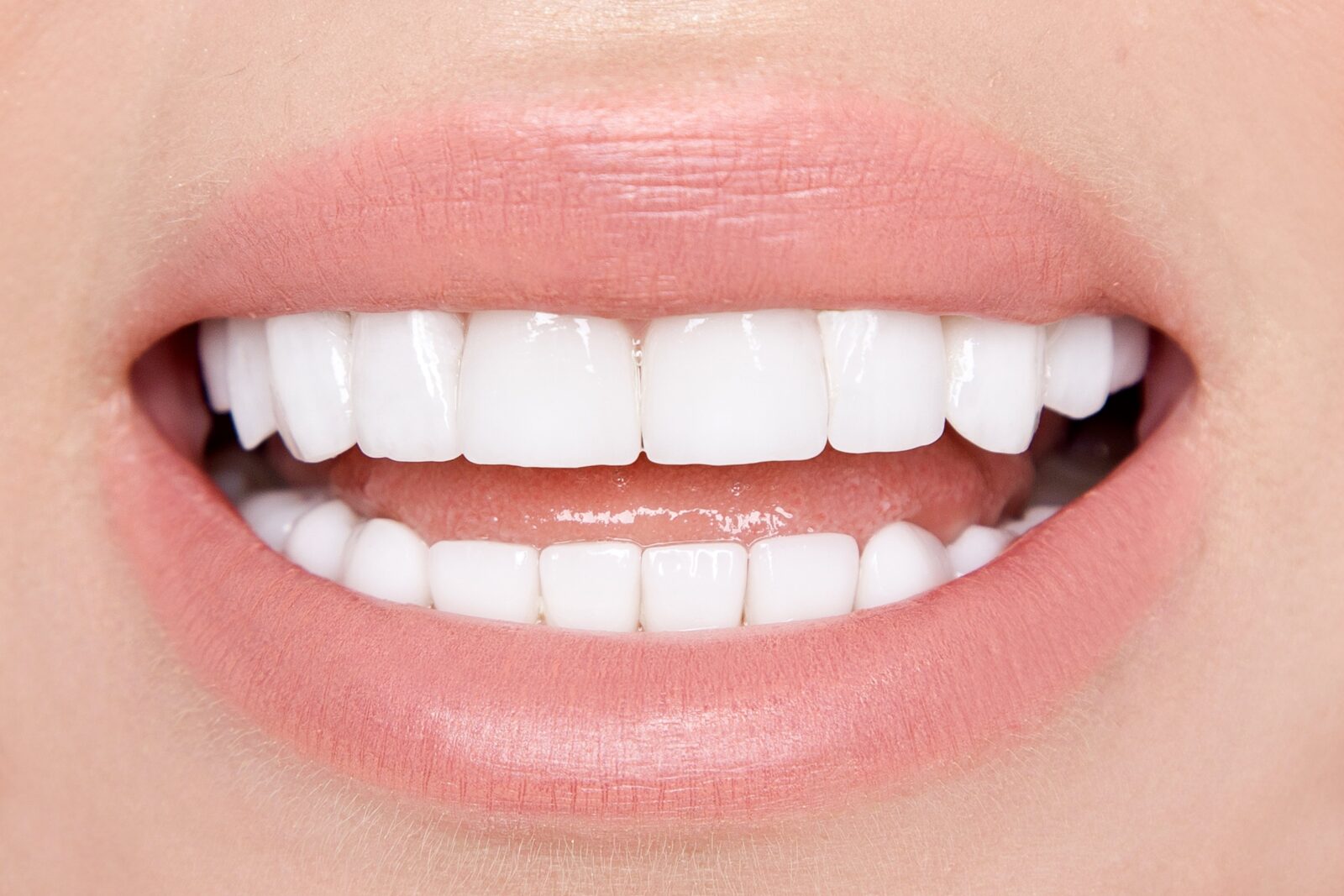Deciding between dental crowns and veneers can be a pivotal choice for anyone looking to improve their smile. Both treatments offer significant benefits for enhancing tooth appearance and function, but they cater to different needs and situations. This blog aims to demystify the differences between crowns and veneers, exploring each option’s materials, durability, cost, and the extent of tooth preparation involved. By providing a detailed comparison and discussing the pros and cons of each, we will help you navigate the decision-making process more effectively. Whether your concern is restoring a damaged tooth or achieving a flawless smile, the information here will equip you with the knowledge needed to consult with your dentist about the best option for your oral health and aesthetic desires.
In This Blog:
- What are Dental Crowns?
- What are Veneers?
- Comparing Crowns and Veneers
- Advantages and Disadvantages
- How to Decide Which is Right for You
What are Dental Crowns?
Dental crowns, commonly known as “caps,” are restorative covers placed over a tooth or dental implant. Crowns are typically recommended for teeth that have been damaged, decayed, or have undergone significant structural compromise, such as extensive fillings or root canals. They are custom-made to fit over the entire tooth, starting at the gum line, thereby restoring the tooth’s shape, size, strength, and appearance.
Types of Materials Used

- Ceramic: Popular for their natural color which blends seamlessly with your natural teeth, making them an excellent choice for front teeth.
- Porcelain-fused-to-metal (PFM): These offer a strong bond and a more natural appearance, with the durability of metal and the aesthetic appeal of porcelain.
- Gold and Metal Alloys: These materials are extremely durable and strong, making them ideal for back teeth where the chewing force is greatest.
Common Reasons for Choosing Dental Crowns
- To restore a broken or worn-down tooth to its original form and function.
- To cover and protect a tooth with a large filling when there isn’t much of the tooth left.
- To cover misshapen or severely discolored teeth and enhance cosmetic appearance.
- To cover a dental implant, providing a tooth-like shape and structure for function.
- To protect a weak tooth from breaking, especially after a root canal treatment.
Crowns are a significant commitment as the procedure involves reshaping the entire tooth to fit the crown properly. This process is irreversible, but it results in a durable and strong tooth that can handle most functions that natural teeth perform.
What are Veneers?
Veneers are thin shells crafted from porcelain or composite resin that are bonded to the front surfaces of teeth. They are primarily used for cosmetic purposes, improving the appearance of teeth by adjusting their color, size, shape, or length. Veneers are an ideal solution for enhancing your smile if you have minor cosmetic concerns.

Types of Materials Commonly Used
- Porcelain: Known for their durability and the ability to mimic the light-reflecting properties of natural teeth, porcelain veneers resist stains better than resin veneers and offer a strong and long-lasting cosmetic solution.
- Composite Resin: These veneers are less expensive and can be applied in a single office visit. Although not as durable or stain-resistant as porcelain, they can be easily repaired.
Typical Reasons for Opting for Veneers
- To correct slight tooth misalignments and improve the appearance without braces.
- To cover stains or discoloration that do not respond to whitening treatments.
- To repair chips or minor erosion in the tooth’s surface.
- To create a uniformly shaped and spaced appearance in one’s smile.
The process of applying veneers is less invasive than that of crowns; only a small amount of the original tooth enamel needs to be removed to fit the veneer. This makes veneers a conservative alternative to crowns, particularly for patients whose underlying teeth are fundamentally healthy and intact. However, like crowns, the process is irreversible, but it offers a significant aesthetic improvement with less tooth structure compromise.
Comparing Crowns and Veneers
Here’s a table comparing the key aspects of dental crowns and veneers:
| Feature | Dental Crowns | Veneers |
| Purpose | Restore damaged or decayed teeth; improve function and appearance | Mainly cosmetic improvements; enhance color, shape, and alignment of teeth |
| Materials | Ceramic, porcelain-fused-to-metal (PFM), gold | Porcelain, composite resin |
| Aesthetic | Encases the entire tooth; can completely reshape and resize the tooth | Covers the front surface; primarily changes the front appearance without altering the entire tooth |
| Durability | 10-15 years, depending on care and material | 7-15 years, with porcelain generally lasting longer than composite |
| Tooth Preparation | Extensive; involves reshaping the entire tooth to fit the crown | Minimal; involves removing a thin layer of enamel from the front of the tooth |
| Cost | Generally higher due to extensive preparation and materials used | Typically less expensive than crowns but may require more frequent replacement |
| Ideal for | Teeth that have undergone significant damage or decay; teeth with large fillings or those that have had a root canal | Teeth with minor cosmetic issues such as slight misalignments, discolorations, or minor chipping |
When deciding between crowns and veneers, several factors come into play, including aesthetics, functionality, durability, and the extent of tooth alteration required. Both options offer effective solutions but cater to different dental needs.
Aesthetic Outcomes
- Crowns: Offer a comprehensive solution that covers the entire tooth, allowing for significant alteration in shape and size. They are ideal for restoring teeth that have suffered extensive damage or decay.
- Veneers: Focus primarily on enhancing the frontal appearance of the teeth, making them perfect for cosmetic improvements like addressing stains, chips, or minor misalignments.
Durability
- Crowns: Typically last between 10 to 15 years, depending on the material and the patient’s oral hygiene practices. They are built to withstand considerable biting forces, making them suitable for back teeth.
- Veneers: Generally last from 7 to 15 years. Porcelain veneers, while more delicate, tend to last longer and resist stains better than composite veneers.
Tooth Preparation
- Crowns: Require more extensive tooth preparation, where a significant portion of the tooth must be filed down to accommodate the crown.
- Veneers: Require less tooth preparation, usually just the removal of a small amount of enamel from the front of the tooth, preserving more of the natural tooth structure.
Cost Considerations
- Crowns: Are often more expensive due to the materials used and the comprehensive nature of the procedure.
- Veneers: Can be less expensive than crowns, though the cost can vary widely depending on the type of veneer and the specific treatment requirements.
Advantages and Disadvantages
Each dental treatment has its own set of pros and cons. Understanding these can help you make a better decision about which is right for you.
Advantages of Dental Crowns
- Protective: Crowns provide a robust protective cover, shielding the tooth from further decay or damage.
- Durable: Made from tough materials that can handle the force of chewing, making them ideal for restoring molar functionality.
- Aesthetic Improvement: They can be crafted to match the surrounding teeth, offering a natural and appealing look.
Disadvantages of Dental Crowns
- Tooth Structure Removal: Installing a crown requires the removal of a significant part of the tooth, which can weaken the natural structure.
- Cost: Crowns are generally more expensive than other dental treatments due to the materials and the complexity of the procedure.
Advantages of Veneers
- Cosmetic Enhancement: Veneers are highly effective in transforming your smile by covering imperfections such as chips, cracks, or gaps.
- Less Invasive: Requires less removal of tooth enamel compared to crowns, preserving more of the natural tooth.
- Stain Resistance: Porcelain veneers offer excellent resistance to staining, maintaining their color and brightness for many years.
Disadvantages of Veneers
- Fragility: While durable, veneers are not as strong as crowns and can chip or break if subjected to excessive force.
- Irreversible: The process involves the permanent alteration of the teeth’s natural structure.
- Not Suitable for Everyone: Veneers are not appropriate for individuals with unhealthy teeth (e.g., those with significant decay or weakened teeth) or for those who have habits like teeth grinding, which might damage the veneers.
By weighing these advantages and disadvantages in the context of your personal dental health and aesthetic goals, you can better decide whether crowns or veneers are the most suitable option for you. Consulting with a dental professional can provide further personalized insights and recommendations.
How to Decide Which is Right for You
Deciding between dental crowns and veneers can be a significant decision, impacting not only the aesthetics of your smile but also the long-term health of your teeth. Here are several key factors to consider to help guide your choice:
Consult with Your Dentist
The first step in making an informed decision is to have a thorough evaluation by your dentist. They can assess the health of your teeth and discuss how each option might address your needs.
Evaluate Your Dental Condition
Crowns might be the right choice if you have teeth that are extensively damaged, have undergone root canal treatment, or require large fillings. Veneers are typically suitable for cosmetic enhancements, such as correcting minor misalignments, covering stains, or closing gaps between teeth.

Consider Your Aesthetic Goals
Think about the final appearance you are aiming for. Crowns offer more dramatic transformations in shape and color, while veneers provide a more natural enhancement, primarily affecting the front surface of the teeth.
Think About Durability and Maintenance
Crowns are generally more durable and better for back teeth where chewing pressure is greatest. They can last for decades with proper care. Veneers, while also durable, may need replacement sooner than crowns and are best suited for the front teeth.
Assess the Cost
Generally, crowns are more expensive than veneers due to the complexity of the procedure and the materials used. However, investing in crowns might be more cost-effective in the long run if significant tooth repair is needed. Consider your budget and check with your dental insurance to see what is covered.
Personal Comfort and Lifestyle Considerations
Your lifestyle choices, such as sports activities or a habit of teeth grinding, might influence the suitability of crowns or veneers. Your personal preference for treatment invasiveness and recovery time should also be considered.
By carefully weighing these factors, you can collaborate with your dentist to choose the treatment that best meets your needs, ensuring that you achieve both the function and appearance you desire.
Conclusion
Ultimately, the decision between crowns and veneers should be made with a clear understanding of the benefits and limitations of each option, tailored to your specific dental needs and aesthetic goals. Both treatments can significantly enhance your smile and improve your oral health, but they serve different purposes. Consulting with a skilled dentist is crucial to guide you through your choices, ensuring that you select the most appropriate and beneficial treatment. Remember, the right choice not only improves your smile but also supports the overall health and functionality of your teeth for years to come.







